
18
HNUE JOURNAL OF SCIENCE
Social Sciences 2024, Volume 69, Issue 4, pp. 18-30
This paper is available online at https://hnuejs.edu.vn/
DOI: 10.18173/2354-1067.2024-0064
THE ARTISTIC CONCEPT OF THE ARTIST IN ORHAN PAMUK'S MY NAME IS
RED AND IRVING STONE'S LUST FOR LIFE: A COMPARATIVE PERSPECTIVE
Nguyen Hong Nho and Nguyen Thi Hong Hanh*
School of Education, Can Tho University, Can Tho city, Vietnam
*Corresponding author: Nguyen Thi Hong Hanh, e-mail: nthhanh@ctu.edu.vn
Received September 27, 2024. Revised November 25, 2024. Accepted November 28, 2024.
Abstract. The artistic conception of the artist figure in Orhan Pamuk's novel My Name is
Red and Irving Stone's novel Lust for Life reveals numerous points of convergence. Based on
the identification of common characteristics of artists, both authors uncover the exceptional
prominence of these qualities, reflected in their portrayal of the artist as possessing
extraordinary attributes, experiencing moments of transcendence during the creative process,
and embodying the dual tragedy of the individual and their era. Beyond these similarities, the
two authors also exhibit distinctive and unique approaches in employing artistic techniques
to convey their conception of the artist. This is evident in their handling of spatial
construction, temporal structuring, and narrative techniques. This article will focus on
elucidating the parallels and distinctions in the two authors' perspectives on the artist as
expressed in their works, which belong to two distinct literary traditions.
Keywords: artistic conception of man, artist, Orhan Pamuk, Irving Stone, comparison.
1. Introduction
Humans are the central subject of study in many fields of life. Philosophy concerns itself
with the essence of humanity, explaining that humans are the sum of their social relationships.
History addresses the origins and developmental processes of humankind. Meanwhile, literature,
with humans as its focal point, aims to analyze and interpret the complex inner world of
individuals as they face the upheavals of their times. In this process, writers often convey an
artistic concept of humanity.
The artistic concept of humanity is “the perception, interpretation, and analysis of humans
through artistic means” [1; 87]. This concept answers the reader’s question: “Why does the writer
portray humans in this way, why do they choose these particular details?” [1; 89]. On one hand,
the artistic concept of humanity is shaped by history, society, and culture. Because “every page
of writing reflects the era in which it was born” (To Hoai). On the other hand, it also “bears the
creative mark of the artist's individuality, tied to the artist's unique aesthetic vision” [1; 93]. The
artistic concept of humanity in literature is not a static product but one that constantly shifts and
evolves. Though this concept carries the personal imprint of the artist, any interpretation of
humanity offered by a writer must be “universal, philosophical in nature, representing the utmost
limits in depicting humans” [1; 94].
In the Dictionary of Literary Terms, an artist is defined as “one who creates or performs art”
[2; 199]. Throughout history, many critics have distinguished the artists by their special qualities,
working in a field that demands a blend of talent and sensitive soul, with their lives often marked

The artistic concept of the artist in Orhan Pamuk's My name is Red and…
19
by continuous highs and lows. Speaking of the artist, Le Ngoc Tra affirms, “It is the same in any
era. Artists are neither better nor worse than others, but perhaps their glories and their sorrows are
more than the average person’s” [3; 71]. The artist is not only a creator of beauty but also becomes
a subject of reflection in many literary works. In these creations, along with building the figure
of the artist, writers often reveal their artistic concept of the artist and their own self-awareness of
their profession.
The novel My Name is Red is one of Orhan Pamuk’s seminal works, contributing to his
global literary reputation. This novel has become the subject of numerous literary studies in
Vietnam and around the world. In Vietnam, My Name is Red has garnered significant attention
from researchers. Dinh Hoai Bao’s work Painting as a Technique in My Name is Red by Orhan
Pamuk (2015) systematically examines the manifestations of painting in the novel, considering
these elements as artistic techniques that contribute to the work’s theme [4]. In the article East-
West Dialogue in Orhan Pamuk’s novel My Name is Red, Pham Tuan Anh delves into East-West
dialogue and discusses various techniques that enhance the dialogue effect within the novel [5].
Internationally, notable works include Ayaz Abdullah’s Use of Color Words in Pamuk’s My
Name is Red (2012), which analyzes the novel from a semiotic perspective [6], and V. Keerthi
Rajalakshmi’s “A Comparison of Amitav Ghosh’s The Glass Palace” and Orhan Pamuk’s My
Name is Red (2023), which compares the expressions of multiculturalism in both works [7].
Research on My Name is Red domestically and internationally demonstrates that scholars have
examined the work through various theoretical lenses, compared it with other literary works, and
paid attention to the incorporation of painting into the novel. However, no study has yet focused
on the artistic concept of the artist in My Name is Red. Therefore, researching the artistic concept
of the artist in this novel offers a new direction, contributing to the interpretation and evaluation
of Pamuk’s continuity and innovation in his artistic conception of the artist, as well as the
techniques used to express that concept.
In Lust for Life, there is a lack of in-depth studies in Vietnam, with most writings primarily
introducing the work. Internationally, through our survey, we found two contributions of
significance. First, Anna Kwiatkowska's article The Treatment of Impressionism in the Narration
in Lust for Life by Irving Stone (2001) examines the influence of Impressionist painting
techniques on the narrative art of Irving Stone’s Lust for Life, including narration style, narrative
language, and the structure of the work [8]. Second, the study “Aesthetics and Ethics: A Critical
Reading of Guernica and Lust for Life” by Harsita Pandey and Ashutosh Mohan (2022) addresses
two key issues: ethics, aesthetics, and the relationship between them in the two novels Guernica
by Dave Boling and Lust for Life by Irving Stone [9]. In Lust for Life, Irving Stone constructs the
figure of the artist based on the real-life example of Vincent Van Gogh, through which he conveys
his artistic views. However, we find that there are still no studies that examine the artistic concept
of the artist portrayed in the work, nor the techniques used by the author to express this concept.
Through our literature review, we recognized that studying the artistic concept of the artist
in Orhan Pamuk's My Name is Red and Lust for Life from a comparative perspective is a new
approach. This approach will contribute to uncovering the similarities in the artistic concept of
the artist between the two authors and explain the unique differences in how they use artistic
means to express that concept.
The research is based on the juxtapositional model of comparative literature, focusing on
cases with incidental similarities. Additionally, the study also employs comparative methods, the
psychology of creativity, and approaches from poetics in literature. Among these, the comparative
method and the approach from poetics are the two primary methods used. The comparative
method is applied to illuminate and identify the similarities and differences in the artistic concept
of the artist and the artistic means used to express that concept between the authors and their
works. The poetics approach is used to explain the artistic elements employed by the writers in

Nguyen HN & Nguyen THH*
20
expressing their artistic concept of humanity. The psychology of creativity method is used to
analyze the mental and emotional states of the artist’s characters during their creative processes
in the works.
Using the aforementioned research methods, this article will highlight the similarities and
differences in the artistic conception of the artist as portrayed in My Name is Red by Orhan Pamuk
and Lust for Life by Irving Stone. Regarding similarities, both authors' conceptions of the artist
build upon prior notions of common characteristics attributed to artists, albeit with a distinctive
emphasis on extraordinary and almost otherworldly qualities. The artistic creation process is
depicted as a state of creative ecstasy, while the life of the artist is portrayed as a dual tragedy -
one that intertwines personal suffering with the tribulations of the era. As for differences, although
both authors employ artistic techniques involving the construction of space, time, and narrative
strategies to express their conceptions, their methods of organization diverge significantly. This
divergence underscores the unique artistic thinking and individual mastery of these two authors,
who hail from distinct literary traditions. The aforementioned similarities and differences will be
analyzed in detail to substantiate and elucidate these observations in the sections below.
2. Content
2.1. The similarities in the artistic concept of the artist in My Name is Red and Lust
for Life
2.1.1. The artist and their extraordinary qualities
When portraying the figure of the artist in My Name is Red and Lust for Life, both Orhan
Pamuk and Irving Stone converge on the notion that the artist embodies extraordinary qualities
and must meet essential, foundational demands of their art to truly become an artist. By adopting
this perspective, the two authors position the figure of the artist within the traditional discourse
on understanding and interpreting the artist's role. The table below provides a systematic overview
of the qualities attributed to the artist as highlighted in the works of these two authors.
Table 1. Special qualities of the artist
appearing in the characters in My Name is Red and Lust for Life
Work
Quality
My Name is Red
Lust for Life
Pecial
Sensitivity
Zeytin is sensitive to life and the
changing times. This sensitivity deeply
affects him; he kills Zarif and feels
sorrowful when reflecting on the fate of
the master miniaturists.
Van Gogh is sensitive to the misfortunes of
others, as well as to light, color, and
nature’s movement. This sensitivity is one
of the causes of his epilepsy.
Vivid
Imagination
The miniaturists use their imagination to
envision everything through Allah's
perspective. Imagination is the tool that
brings them closer to Allah’s world
during the creative process.
The Impressionist painters used their
imagination to create a unique and novel
world on their canvases. Their imagination
helps them break free from traditional art
and revolutionize painting.
Profound
Knowledge
Knowledge of related fields: Ottoman
religion and culture. Expertise: miniature
painting techniques.
Knowledge of related fields: literature,
psychology, anatomy. Expertise:
Impressionist painting techniques.
Creative
Individuality
Enishte blends traditional painting styles
with Western techniques. To achieve
this, he must struggle against the strict
rules of Islamic painting, leading to his
murder.
Van Gogh and the Impressionists face
strong criticism for defying contemporary
art norms; they are not accepted by their
contemporaries and live in isolation,
poverty, and illness.

The artistic concept of the artist in Orhan Pamuk's My name is Red and…
21
Sacrifice for
Art
Sacrificing health: The master
miniaturists work tirelessly until they go
blind, which they see as a reward from
Allah.
Sacrificing wealth and status: Many
miniaturists accept a humble,
impoverished life to pursue traditional
artistic values.
Sacrificing health: The Impressionists
(especially Van Gogh) created art while
enduring hunger and cold, and using
absinthe to maintain clarity and inspiration.
Sacrificing status, wealth, love, family, and
religious faith: The Impressionists are
willing to abandon all basic values to
pursue their new artistic path.
Moreover, a noteworthy point of convergence between the two authors lies in their portrayal
of certain artist traits at their highest level of expression. Coincidentally, the artist characters in
My Name is Red and Lust for Life are depicted as individuals with extraordinary sensitivity to art
and an unwavering dedication to their craft. The sensitivity and self-sacrifice of these artists in
both works reach an absolute and exceptional degree, bordering on the extreme, if not imbued
with a sense of radical intensity.
In Art and the Creative Consciousness, Graham Collier cites a statement by the painter and
sculptor Naum Gabo, “The mind of the artist is a stormy sea full of impressions, reactions, and
experiences as well as emotions and feelings. [...] For the artist, these emotions and reactions are
in a heightened state. He is more deeply engaged with them, and the urge to express these
experiences is far stronger than in ordinary people. This, I believe, is why the artist's mind is not
only stormy but, alas, often deeply troubled and tormented as well...” [10; 35–36]. Naum Gabo
highlights the extraordinary sensitivity inherent in an artist's soul. Through their depictions of
artists, Orhan Pamuk and Irving Stone similarly converge in their perspective on the role and
impact of this heightened sensitivity on the artist's being.
In My Name is Red, the miniature painter Zeytin is described by Master Osman as “the most
sensitive and silent” [11; 356]. Observing his surroundings, Zeytin is profoundly affected by the
scenes he sees, compelling him to recreate them on paper, “Sometimes I want to cram everything
into my mouth; at other times I want to fill the page with a painting of every creature I see” [11; 388].
This extraordinary sensitivity enables Zeytin to reflect the beauty of life with unparalleled depth and
authenticity, seen through the lens of Allah. Notably, as Venetian art begins to infiltrate the traditional
Ottoman artistic tradition, Zeytin's acute intuition makes him vividly aware of its impact. He foresees
the inevitable decline of traditional Islamic art. Unlike Leylek, Kelebek, or any other artist whose
sensitivity is “adequate” for their craft, Zeytin experiences an intense inner turmoil as he grapples
with defining his artistic vision - a struggle that equates to affirming faith and a way of life.
Whenever Zeytin narrates in My Name is Red, the reader encounters his profound anxiety, a
reflection of his soul as turbulent as “a stormy sea” [10; 35], “Blending our ancient traditions with
those of the infidels will strip us of our purity and relegate us to their servitude” [11; 225], “There
is no longer any place in Istanbul for our master miniaturists, who simply wish to live by their
skills and honor” [11; 552]. Zeytin's sensitivity reaches an extraordinary level, as evidenced by
his willingness to murder Zarif, his fellow artist, believing that Zarif's death would protect the
workshop and its miniaturists from impending danger, “This man has slandered us, those of us
working on the book secretly commissioned by the Sultan. If I do not silence him, he will
denounce the beloved Enishte, all the miniaturists, and Master Osman as heretics, leaving them
to the wrath of Hoja of Erzurum's fanatical disciples” [11; 173–174]. Zeytin's sensitivity becomes
so extreme that it borders on radicalism, taking him far beyond the scope of his artistic endeavors.
His reflections on art transcend the boundaries of what is being created, “Whenever a masterpiece
is made, whenever a magnificent painting brings tears of joy or sends shivers down your spine,
you can be certain of this: two styles, never before combined, have come together to create
something new and wondrous” [11; 225–226]. This extraordinary sensitivity ultimately becomes
one of the key factors driving Zeytin's life into tragedy.

Nguyen HN & Nguyen THH*
22
In Lust for Life, Van Gogh is depicted as an artist with a profound sensitivity to life. This
heightened sensitivity prevents him from remaining indifferent to the suffering of those around
him. His time in Borinage, aiding coal miners, and his period in The Hague, where he provided
for a destitute prostitute, exemplify Van Gogh's capacity for deep empathy toward the struggles
of others. Later, as a painter, Van Gogh continued to demonstrate his acute perception of light,
color, and movement. When observing natural objects, he always perceived them as being in
constant motion and yearned to capture that dynamic state in his art, “When I paint the sun, I want
the viewer to feel it spinning at an incredible speed, radiating light and waves of scorching heat
with immense power! When I paint a wheat field, I want people to feel that every atom in the ears
of wheat is reaching outward, striving to sprout anew, to reveal itself” [12; 447]. This
extraordinary sensitivity brought both advantages and challenges to Van Gogh’s life, “He was too
sensitive to life and nature. That is why he had the ability to interpret life and nature for others.
But if he did not take care of himself, this excessive sensitivity would harm him” [12; 465]. Such
sensitivity is a crucial condition for the creative process, but if the artist fails to control it, it can
come at the cost of their health or even their life.
Thus, the artists in both My Name is Red and Lust for Life are portrayed as individuals with
exceptional sensitivity to life and artistic creation. However, this sensitivity extends far beyond
the ordinary, elevated to an absolute degree, even reaching critical extremes. With artistic passion
coursing through their veins and influenced by their unique psychological and physiological traits,
controlling and moderating their inner impulses seems nearly impossible for these artists. This is
precisely the reason behind the creation of their masterpieces, accompanied by their tragic
destinies.
In both My Name is Red and Lust for Life, Orhan Pamuk, and Irving Stone portray the
characters of artists as embodying a level of sacrifice for their craft that borders on absurdity.
While it is understood that pursuing art demands sacrifices - such as wealth, health, and
relationships - the sacrifices made by the characters in these works are pushed to their limits,
becoming acts of self-destruction.
In My Name is Red, a successful miniature painter is one who goes blind in old age - a
testament to having devoted their life to recreating Allah's memories of the world. Blindness is
regarded as the pinnacle of the illustrator's craft, and many artists pray for the “divine darkness”
bestowed by Allah. This belief is intrinsic to Islamic miniature painting. However, some artists
in the novel go as far as to blind themselves intentionally to demonstrate their unwavering loyalty
to their style, refusing to compromise as a betrayal of everything they have pursued.
When Master Bihzad foresaw the fall of Herat, he blinded himself. Similarly, Master Osman,
upon realizing that the Sultan desired his portrait to be painted in the European style and feeling
betrayed by his beloved disciples, replicated Bihzad's act, “After Master Osman understood that
the Sultan wanted his portrait painted in the style of European masters and that all of you, whom
he loved more than his own children, had betrayed him, he imitated Bihzad by plunging this
needle into both of his eyes on the final night in the Treasury” [11; 536]. The love, sacrifice, and
loyalty to art depicted in these actions appear extreme. While these artists' dedication to their craft
is admirable, the act of blinding themselves - justified as finding divine happiness - is ultimately
an act of despair, a desperate attempt to preserve their artistic integrity at the cost of their lives
and talents.
In Lust for Life, Vincent Van Gogh sacrifices his entire life for painting. Beyond common
sacrifices like wealth or love, Van Gogh sacrifices the remaining time of his life. Upon arriving
in Arles to find inspiration, he was told, “I think Arles is like an epileptic; it excites itself to such
an extent that it will convulse, writhe, and foam at the mouth” [12; 407]. The scorching sunlight
of Arles invigorated Van Gogh, fueling his creative passion, “The intense sunlight created a
powerful, fierce energy within him” [12; 437].


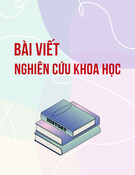



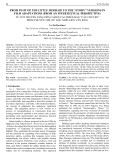
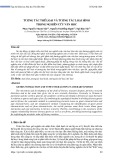
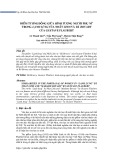
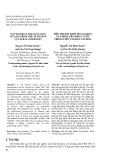

![Bộ câu hỏi trắc nghiệm Văn bản tiếng Việt [chuẩn nhất]](https://cdn.tailieu.vn/images/document/thumbnail/2025/20251127/thuynhung051106@gmail.com/135x160/24021764296609.jpg)
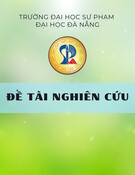

![Bài giảng Ngôn ngữ học đối chiếu Nguyễn Ngọc Chinh [PDF]](https://cdn.tailieu.vn/images/document/thumbnail/2025/20251101/vovu03/135x160/7471762139652.jpg)


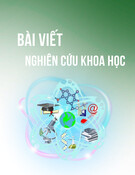

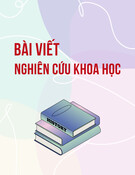
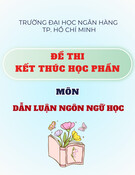

![Ngân hàng câu hỏi môn Tiếng Việt thực hành [chuẩn nhất]](https://cdn.tailieu.vn/images/document/thumbnail/2025/20251003/kimphuong1001/135x160/21861759464951.jpg)
![Bài giảng Văn học phương Tây và Mỹ Latinh [Tập hợp]](https://cdn.tailieu.vn/images/document/thumbnail/2025/20251003/kimphuong1001/135x160/31341759476045.jpg)


